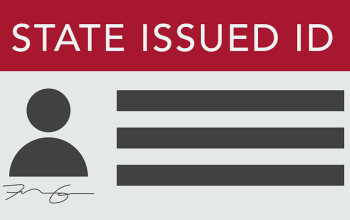The Vehicle Identification Number (VIN) is a 17-character code accessible on every vehicle, offering insights into its history, specifications, and safety ratings. Online VIN checkers empower buyers to access detailed vehicle history reports, including maintenance records, accident histories, and recall information, enabling informed purchasing decisions and combating fraud. This practice is applicable not only for cars but also for motorcycles, boats, and imported vehicles, enhancing transparency in the buying process.
Unlocking the Secrets of VIN Numbers: A Comprehensive Buyer’s Guide
When purchasing a vehicle, understanding the Vehicle Identification Number (VIN) is an essential step in making an informed decision. This unique 17-character code serves as a car’s fingerprint, offering a wealth of information to savvy buyers. From determining the manufacturing year and identifying potential issues to checking safety ratings, knowing how and where to locate the VIN is a powerful tool for any car shopper. In this article, we’ll explore the significance of VINs across various vehicle types, demystifying the process of decoding them, and highlighting the growing popularity of online VIN check tools in ensuring transparent transactions.
- Understanding VIN Numbers: Your Buying Guide
- Where to Find the VIN on Your Vehicle
- Unlocking VIN Information: Year and History
- Safety Features: Decoding VIN Data
- Online VIN Check Tools Popular in 2023
- Beyond Cars: VINs for Motorcycles, Boats, and Imports
- Ensuring Transparency with a VIN Search
Understanding VIN Numbers: Your Buying Guide

A Vehicle Identification Number (VIN) is like an unique fingerprint for your car, boat, or any other vehicle. It’s a 17-character code that contains a wealth of information about the vehicle’s history and specifications. Understanding this number can empower buyers to make informed decisions. By checking the VIN, you can confirm the year it was manufactured, its make, model, and even access important safety ratings and recall data. Online VIN checkers have made this process accessible, allowing users to verify a vehicle’s history, including any previous accidents or outstanding recalls, before purchasing.
For instance, a VIN search might reveal that a seemingly perfect used car has suffered water damage in the past, which could impact its performance and longevity. This knowledge gives buyers the power to negotiate prices or steer clear of potentially costly surprises post-purchase. Whether you’re buying a classic motorcycle, a pre-owned boat, or an imported vehicle from another country, taking the time to look up the VIN can prevent you from making uninformed choices and ensure you drive away with a safe, reliable vehicle.
Where to Find the VIN on Your Vehicle

The Vehicle Identification Number (VIN) is a unique code imprinted on every vehicle, serving as its fingerprint. Locating this essential number is straightforward but varies slightly across car makes and models. The most common places to find it are on the dashboard near the driver’s side window or on the driver’s door frame, often within an oval or rectangular label. Some manufacturers also display it on the steering wheel column or inside the glove compartment.
For those purchasing a used vehicle, this accessibility is beneficial as it allows buyers to conduct thorough research before making a decision. By checking the VIN online through free tools, buyers can access detailed vehicle history reports, including maintenance records and any reported accidents or damages, ensuring a safe and informed purchase.
Unlocking VIN Information: Year and History

Every vehicle has a unique identifier called a Vehicle Identification Number (VIN), which serves as its fingerprint. By simply looking up this number, buyers can access a wealth of information about their prospective purchase. The VIN is typically located on a sticker or engraved into the metal of the dashboard or driver’s side door frame. It appears as a 17-character alphanumerical code that includes both letters and numbers.
One of the most basic pieces of data unlocked through a VIN search is the vehicle’s year of manufacture. This initial layer of information allows potential buyers to narrow down their options based on age and model. Beyond the production year, a VIN lookup can reveal detailed history reports, including past owners, service records, and any accidents or damage the vehicle may have sustained. This transparency is crucial in ensuring that buyers make informed decisions and avoid vehicles with hidden issues.
Safety Features: Decoding VIN Data

When buying a vehicle, understanding the Vehicle Identification Number (VIN) is key to ensuring safety and transparency. Decoding this unique code reveals critical information, including the car’s safety features. By checking the VIN, buyers can access detailed reports on collision history, accident records, and even recall notices, all of which are essential for making an informed decision.
Safety ratings, airbag deployment data, and anti-theft system information are among the life-saving details hidden within the VIN. Advances in parsing software allow for easy access to this data, empowering buyers to protect themselves from potential hazards and ensuring they purchase a vehicle with robust safety standards.
Online VIN Check Tools Popular in 2023

In 2023, online VIN check tools have gained immense popularity among car buyers for a variety of reasons. These user-friendly platforms allow individuals to quickly and easily access detailed vehicle history reports, including information about accidents, ownership records, service maintenance, and more. By simply inputting the unique 17-character Vehicle Identification Number (VIN), buyers can bypass the need for costly background checks and save valuable time during their search for the perfect vehicle.
Moreover, these online tools have become indispensable for safeguarding against potential fraud. With many buyers opting to purchase vehicles from private sellers or international markets, having access to a comprehensive VIN report instills confidence in the transparency of the transaction. By checking for hidden damage or past accidents, savvy consumers can make informed decisions, ensuring they acquire a safe and reliable vehicle that meets their needs.
Beyond Cars: VINs for Motorcycles, Boats, and Imports

While the focus is often on cars, Vehicle Identification Numbers (VIN) are essential identifiers for all types of vehicles. For motorcycles, the VIN is usually located on the engine or near the steering column, providing similar insights into its history and specifications. Boats also have unique VINs, often etched or painted on a metal plate within the vessel, which can reveal manufacturing details and help verify ownership.
When it comes to imported cars, VINs play an even more critical role in ensuring compliance with local regulations. Many countries require extensive documentation and verification processes for imported vehicles, using the VIN as a central reference point. Advances in VIN parsing software have made it easier than ever to access and interpret this data, empowering buyers to make informed decisions regardless of the vehicle’s origin.
Ensuring Transparency with a VIN Search

In today’s digital age, transparency is paramount when purchasing a vehicle. One way to ensure a clear and safe transaction is by conducting a Vehicle Identification Number (VIN) search. A VIN is a unique code imprinted on every car, truck, motorcycle, or other motor vehicle, acting as its fingerprint. It offers a wealth of information that can protect buyers from potential scams or hidden issues. With just a few clicks, free online VIN check tools allow users to uncover vital details such as the vehicle’s history, production year, make, model, and even safety ratings. This practice is increasingly popular, especially among savvy 2023 buyers who want to avoid purchasing vehicles with undisclosed damage.
By inputting the VIN into an online database, individuals gain access to a detailed report that can reveal past owners, service records, and any reported accidents or repairs. This knowledge empowers consumers to make informed decisions, ensuring they acquire a vehicle with a transparent history. Moreover, it helps in identifying potential red flags that might be overlooked during a physical inspection, making the buying process more secure and trustworthy for all parties involved.
Knowing how to locate and interpret a Vehicle Identification Number (VIN) is an invaluable skill for any car buyer. With online VIN check tools becoming readily available and user-friendly, consumers can now access detailed vehicle history reports, ensuring they make informed decisions. This practice is not limited to cars; it’s a practical approach for purchasing motorcycles, boats, or imported vehicles, promoting transparency and safety in the buying process.



